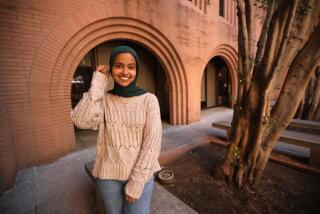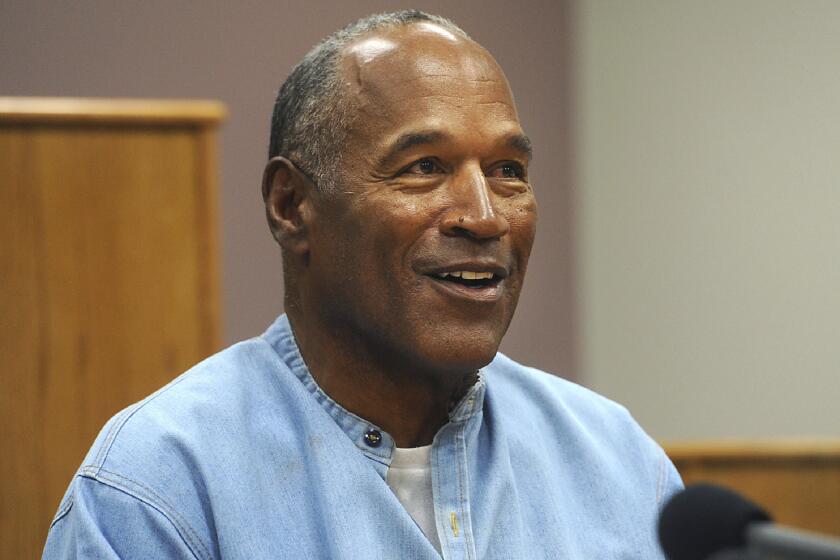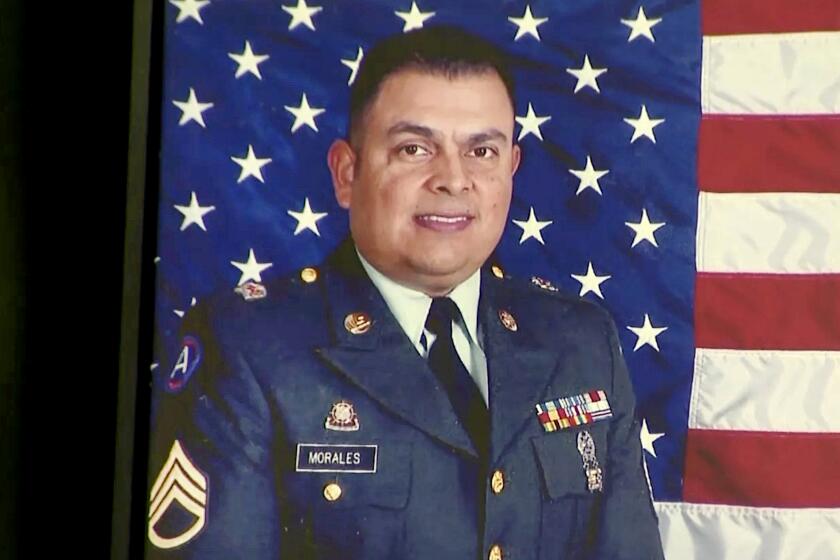For Street Addresses, It All Begins at 1st and Main
Many Angelenos’ place in Los Angeles--their street address--is determined by where they live and work in relation to the historic corner of 1st and Main streets in downtown’s Civic Center.
First and Main is ground zero for the city’s and county’s unified house-numbering systems--the manner in which government determines the addresses of large numbers of homes and businesses.
Streets are numbered according to their distance from that intersection.
The city and Los Angeles County are divided into quadrants: east, west, north and south. The numbering of the blocks of streets, in groups of 100, begins at 1st and Main. The quadrant also determines whether a street name is preceded by east, west, south or north.
The numerical streets south of 1st--down to 266th Street near Wilmington--indicate the distance from 1st. Century Boulevard is 100 blocks south of 1st and Main.
Thus Abraham Berookhim’s Olive Tree restaurant is at 100 S. Main St.
“I have the lowest address in the city,” boasted Berookhim, whose Italian eatery has occupied the southeast corner of 1st and Main for 10 years. “Even the mayor [Richard Riordan] came in to shake my hand.”
Others aren’t so impressed.
“It is important, but it doesn’t mean anything to us,” said Gina Kim from behind the counter of John’s Burger, a family-owned business at 101 S. Main. “We’ve been here for 19 years. We have lots of customers, but they don’t come here because of the address.”
Long before city and county officials decided in 1945 to center the numbering system at 1st and Main, the intersection was at the center of Los Angeles’ growth.
It is nearly three blocks south of the place where El Pueblo de Nuestra Senora la Reina de Los Angeles de Porciuncula was founded in 1781.
Main, a north-south street that was originally named Calle Principal, is the oldest street in the city. It is in the first official survey of the area, done in 1854, four years after California became the 31st state.
First was also laid out in pioneer days, and the intersection became the town’s center.
The city’s first post office was on Main. The 27-story City Hall, built in 1928 for $9.7 million, is at the northwest corner of 1st and Main. The federal courthouse was built in the 1930s on Main, a block north of 1st. Los Angeles police headquarters at Parker Center is just around the corner. The Criminal Courts Building is nearby, and up the hill are the buildings housing county government and the civil courts.
The Civic Center is not all serious government business. The Kosher Burrito stand on 1st, a few doors east of Main, has came to represent the varying degrees of quirkiness found only in L.A. So, it was big news last year when county health inspectors temporary closed the stand because of vermin.
And for true history buffs, the street with the long name--Astronaut Ellison S. Onizuka Street, after one of the astronauts killed in the 1986 explosion of the Challenger space shuttle--is a block and a half away from 1st and Main.
In recent years, skid row has edged up to 1st and Main, and homeless hang out there.
And landmarks have disappeared. The old State Building on the north side of 1st at Spring Street was torn down in the 1970s and hasn’t been replaced. The Code 7 bar, a hangout for cops, went out of business in 1990 and was replaced by Berookhim’s Olive Tree.
In turn, Berookhim is planning to move the Olive Tree to more spacious quarters at a onetime office building a block away at 1st and Los Angeles streets. Then, he plans to replace the Olive Tree with a Mexican “build-your-own-burrito” restaurant at 100 S. Main.
Still other familiar buildings are undergoing renovation. City Hall, for example, is in the midst of a four-year remodeling. Also, LAPD’s headquarters is expanding to a building being built on the north side of 1st.
It’s a sprucing up that even the transients think is good for 1st and Main.
“This place will look real nice when it’s done,” said a transient who goes by the name Jocko. “Some of the workers give me money when I ask. They’re cool, and this place will be cool when they’re done. Maybe I’ll make more money here.”
But for most in the Civic Center, 1st and Main is just that and nothing more.
It should be noted that not all addresses in Los Angeles County are part of the system originating at 1st and Main.
Cities such as Pasadena, Long Beach, Beverly Hills and Glendale have their own numbering systems.
And not all of the city of Los Angeles fits into the grid system. Streets curl around hills and mountains, with dead ends, unexpected cul de sacs and twists and turns. Then there are streets, such as Avenue 66 in Highland Park, that defy explanation.
Nor did some of the new suburban subdivisions built after World War II fit the grid system.
For the record, Los Angeles’ longest street is Sepulveda Boulevard, which runs from the Golden State Freeway in the San Fernando Valley to Willow Street near Long Beach. The shortest is Powers Place, south of downtown, which is all of 13 feet long.
And the steepest is Fargo Street in Silver Lake, which is at a 32-degree angle.
More to Read
Start your day right
Sign up for Essential California for news, features and recommendations from the L.A. Times and beyond in your inbox six days a week.
You may occasionally receive promotional content from the Los Angeles Times.






